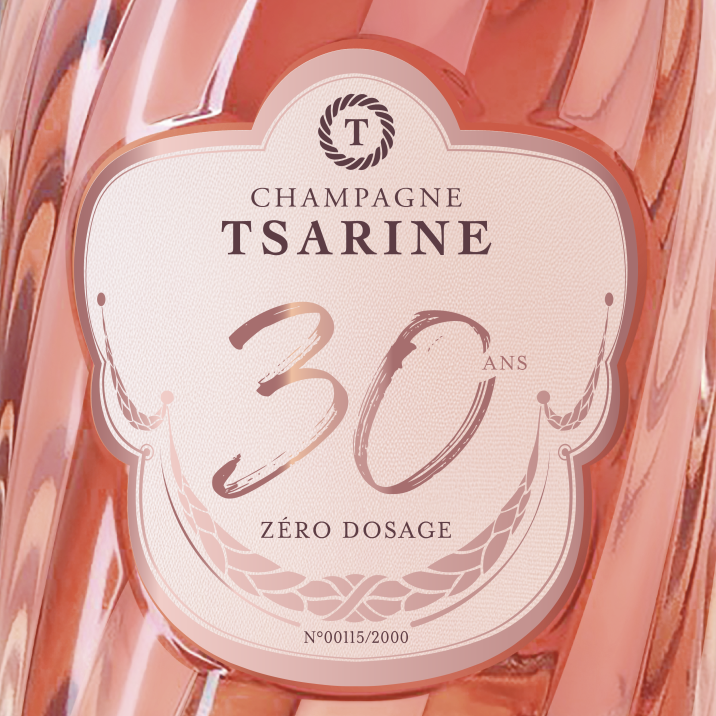Talking heads
Getting the trade’s view on Champagne
George Atkinson-Clark, Ruinart (UK)
70% of our Ruinart business in the UK is sold into the on-trade which is highly sensitive to economic conditions and consumer confidence. We experienced a very slow first quarter of the year due to international uncertainty and the Iraq war, but from April onwards we have been extremely busy, beating last year’s turnover, month by month.
The introduction of Ruinart Rosé in half bottles has given a great boost to this growing quality niche in the market, and together with Ruinart Blanc de Blancs (launched two years ago and also sold at a premium) we are able to maintain Ruinart’s distinctive image.
Following the long hot summer (excessive heat has not necessarily been good news for Champagne sales) and a return to a more buoyant stock market, we are anticipating a very positive Christmas quarter. No doubt there will be a re-assessment of Champagne pricing in the New Year.
Terence Kenny, Champagne Pannier
There is a lot of talk in Champagne right now of the ultimate cost of grapes and the small size of this year’s harvest. In the short term, the judicious use of the reserve stock will be able to maintain the delicate balance between supply and demand that is always so important in the marketing of Champagne.
There are very few other industries where the suppliers of the raw ingredient (grapes in this case) get such a lion’s share of the wealth created by the final product (Champagne).
However, consumers don’t wish to hear about this, requiring only that they are getting value for money from Champagne, which they are. In fact, the consumer is well aware of the grand marque‚ story and the different pricing levels in Champagne, and realises the very good value of alternative brands, such as Pannier, which are on offer at around £17 per bottle.
There is always talk of extending the Champagne area, but experience has shown that it copes best when global demand is just below 300 million bottles. The status quo‚ should remain.
Simon Leschallas, Bollinger UK
The feel good factor resulting from such a long hot sunny summer and all the negative words about the futility of saving money with interest rates so low and the poor performance of so many pension funds has given a boost to Champagne sales.
At Bollinger, we had a good start to the year in January and February, and after a difficult period during late March, April and May, sales picked up quickly the war effect being very short lived. We have concentrated strongly on the on-trade this year and Bollinger has enjoyed good success.
Partner Content
While competing retailers sensitively price Bollinger on their various shelves at a uniform £27.99 per bottle, there is no such tight control in the on-trade. Bollinger is on the wine lists at different establishments at anything between a modest £40 and an inflated £85 per bottle.
Bollinger prices have remained stable since 2,000 and we shall be preparing to raise our prices a little at the start of next year.
Jean-Nôel Girard, Champagne Devaux
Overall, we remain optimistic for Champagne. Sales levels were maintained in the first six months of the year but, surprisingly, the scorching summer has been too hot even for Champagne consumption.
Business in the UK has been steady, following an excellent year for Devaux in 2002, but there will surely be some heavy promotions in the vital pre-Christmas period, as some major brands are running behind target.
Talk of a disastrous‚ 2003 vintage are premature and the quality may well be a pleasant surprise, despite the lack of acidity (1976 is a case in point). In our area around the Aube the average yield is between 8 and 9000 kilos, although in other areas the frost damage was much more severe.
As grape prices will obviously continue to harden, being in direct touch with our growers at Union Auboise is a huge advantage for the Devaux brand. Smaller negociants in the middle sector of the market are already feeling the squeeze and further acquisitions cannot be ruled out, which is not good for Champagne.
Laurent Davaine, Champagne Nicolas Feuillatte
Champagne trading seems to have regained its cruise‚ speed and shipments to date are running at about 2% higher compared with last year. As far as we are concerned, our sales in the USA have not been hit by the Iraq war (Nicolas Feuillatte sales are up 20% in the first eight months) and I have not heard about any significant retaliation‚ which would have affected Champagne brands in The States.
In the UK, Nicolas Feuillatte has become the top selling brand in the supermarket and off-licence chain market, with a retail selling price at just below £18 (£3 or £4 less during promotions).
This year’s vintage for us is around 7,500 kilos per hectare which gives a little more than 60% of a normal crop, with some crus producing outstanding wins, others showing a lack of balance.
Grapes are more and more sought after and prices keep rising, but we look for a general upward trend in Champagne.




